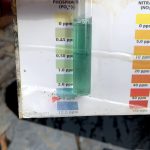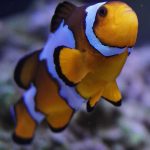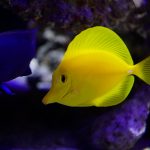Algae Control in an Aquarium
Along with death and taxes, one of the immutable laws of the universe is aquarium owners will eventually have algae in their tanks. Because each aquarium is essentially a closed ecosystem with pretty much everything that algae species need to thrive, every fish tank will need regular, proactive algae cleaning to keep their display looking its best. Even though there will always be algae to scrub, the choices you make can make a huge impact on how much and how often you have to perform this chore. This article will provide some helpful tips on controlling algae in a fish tank and how you can spend less time scrubbing and more time enjoying your tank! Let’s get started:
Regular Algae Scrubbing
This may seem obvious but spending a few minutes 2-3 times each week and giving all the surfaces a quick once-over keeps algae control fast, easy, manageable and also keeps your tank looking its best at all times. However, this is much easier said than done, as most of us working stiffs are tired and hungry when we get home and algae scrubbing can’t compete with putting your feet up, tucking into a pizza and watching the game on TV. However, just spending a quick five minutes a couple times each week keeps algae in check and prevents the buildup of more stubborn algae species that take a lot more effort to control. Best defense for algae is a good, regular, proactive offense.
Water Changes
Not only are regular water changes an easy way to make sure your system and animals are healthy, they also prevent the accumulation of nitrate (NO3) and phosphate (PO4), which are water quality parameters that turbocharge algal growth. Look at it this way: each molecule of food that you put into your system will end up adding to the concentration of NO3 in your system and some foods have a lot of PO4 in them, too. Keeping your water chemistry parameters optimal with regular water changes is enormously helpful for making algae control easier.
Proactive Water Quality Testing and Tracking
Along with regular changes, regular water quality testing and recording of the results is also quite helpful for algae control. Depending on the type of aquarium you have, water quality testing reagents don’t cost a lot of money and testing doesn’t take very much time at all once you’ve done it a few times and developed a system. In fact, one of the most effective ways of controlling algae in an aquarium is keeping NO3 below 5ppm (parts per million) and keeping PO4 as close to 0 as possible. Starve these photosynthetic organisms of the fuel they love most and you’ll be doing yourself (and your tank and animals) a huge favor. You’ll also gain invaluable knowledge and insight into the science of maintaining a healthy system.
Lighting and Photoperiod
This is a big one. The type(s) of lighting you have over your aquarium and the wavelengths of light they emit can make a huge difference in how much algae you have to scrub and how often you have to do it. How this relationship works is quite detailed and if you have a tank with live plants and/or living corals in it, you may need lighting that is also ideally suited for growing many different species of algae. Complicating matters further, some algae species thrive and grow rapidly under intense lighting while others thrive and grow rapidly under low levels of light. Even in a fish-only tank without specialized lighting that is only on for a couple hours each day, you’ll get algal growth on the glass (or acrylic,) rocks, fake or real plants, wood and other elements of the aquascape. However, the steps you take that are outlined in this article can make a huge difference in how much algae you have to scrub and how often you have to do it. Also consider the photoperiod, or length of time that the lights are on each day. If you adjust the timers so that the lights only come on a few hours each day, it can make a huge difference in how much algae scrubbing you have to do.
Natural Controls
There are critters that can help you control many but not all types of algae often found in fish tanks. Whether your system is freshwater or saltwater, you can find snails, abalone, shrimp, and many different species of fish that will graze on many types of algae and need these nutrients for optimal health. However, you’ll want to be mindful that they won’t eat all types of algae, they may or may not get along with your other fish and invertebrates and could end up causing more problems than you bargained for. When you’re looking for natural janitorial help with algae control, make sure that you do your research by consulting resources online, talking with staff at your local fish store, and asking specific questions on online forums, especially if you belong to an aquarium club. In fact, belonging to a fish and coral enthusiast’s club is a great way to meet people with similar interests, learn from other hobbyists and avoid mistakes that others have done.
Don’t Overfeed Your Animals
Carefully monitoring how much and how often you feed your animals can make a huge difference in algae control. It’s ridiculously easy to overfeed a system, as watching our critters eat and the different behaviors they display while eating is one of the joys of having an aquarium. Depending on where your tank is located, you may not be the only person feeding your animals and you could have water quality and fish health problems even though you are feeding carefully and conscientiously. The best policies are:
- Feed smaller amounts multiple times each day, if possible.
- Buy high-quality foods that pack more nutrition into each bite.
- Resist the temptation to add that extra helping of food.
- Change feeding strategies if some animals are not getting the amount of food they need.
- Secure foods if your tank is in a shared area to prevent overfeeding from well-meaning but uninformed folks who think, “Those fish look hungry. That guy is not feeding enough.”
How to Control Algae in an Aquarium
As you can see, controlling fish tank algae is multifaceted, with lots of factors combining to make algae control fast and easy or a soul-crushing and depressing chore. You may find it helpful to have the perspective that you can’t really prevent algae from growing in your aquarium; life finds a way, after all. However, the steps you take, the proactive maintenance that you perform and the better you understand how and why algae bloom in a fish tank can be hugely helpful in how you manage algae in your aquarium(s). These factors will also be hugely helpful in how much work you have to do to keep your display looking great and how much joy you derive from looking at it when you’re done. Thanks for reading!









